9 Leg Curl Variations – How to Do a Leg Curl – Illustrated Guide
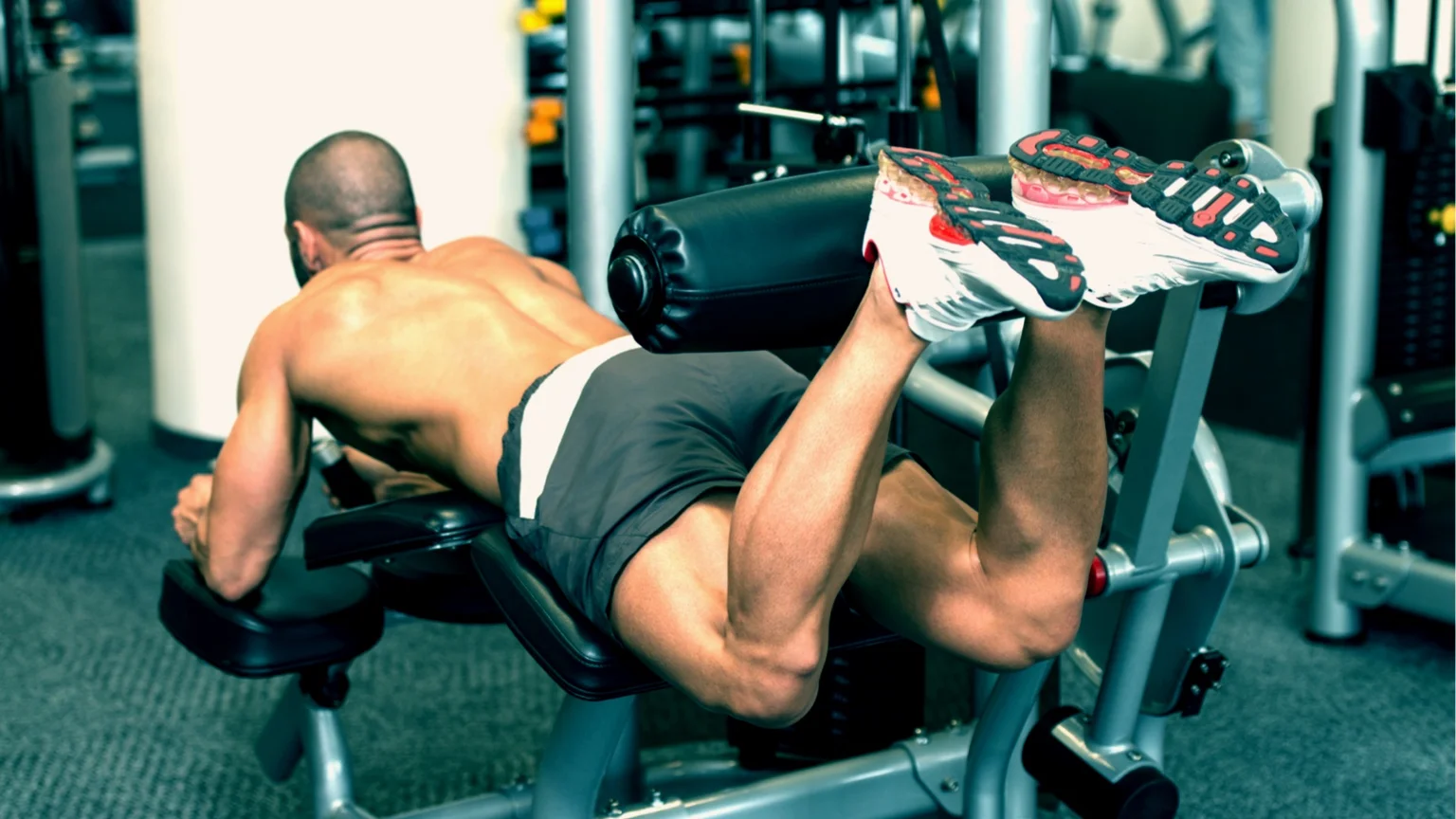
The leg curl is a popular isolation exercise that targets your hamstring muscles. You normally perform this exercise on a leg curl machine, seated or lying down, although some variations use a cable or resistance band.
The standard leg curl involves bending your knees to pull the machine's lever up to your buttocks, using the action of your hamstrings. The resistance can be easily adjusted to your fitness level, allowing for simple progressive overload as your strength increases.
The leg curl is a popular addition to many workout routines, including the leg day of the ULPPL split and the lower body day of PHAT.
Jump to
- Hamstring curls
- Lying leg curls
- Seated leg curls
- Standing leg curls
- Dumbbell leg curls
- TRX leg curls
- Cable lying leg curls
- Resistance band standing leg curls
- Resistance band prone leg curls
Leg curls vs other hamstring exercises
There are many exercises to choose from to target your hamstrings. The leg curl is an isolation exercise that specifically works your hamstring muscles. This makes it different from Romanian deadlifts, sumo squats and hip trusts, which are all compound exercises, but which target your hamstrings in one way or another.
But how do leg curls compare to these exercises?
- Leg curls vs Romanian deadlifts (RDL) - The Romanian deadlift is a compound exercise that works your entire posterior chain, including your glutes, hamstrings and lower back. They are effective at emphasizing your hamstrings, but they require more balance and coordination compared to leg curls. Leg curls are easier to perform, which makes them more suitable for beginners. They also allow for targeted muscle training, allowing you to focus entirely on your hamstrings.
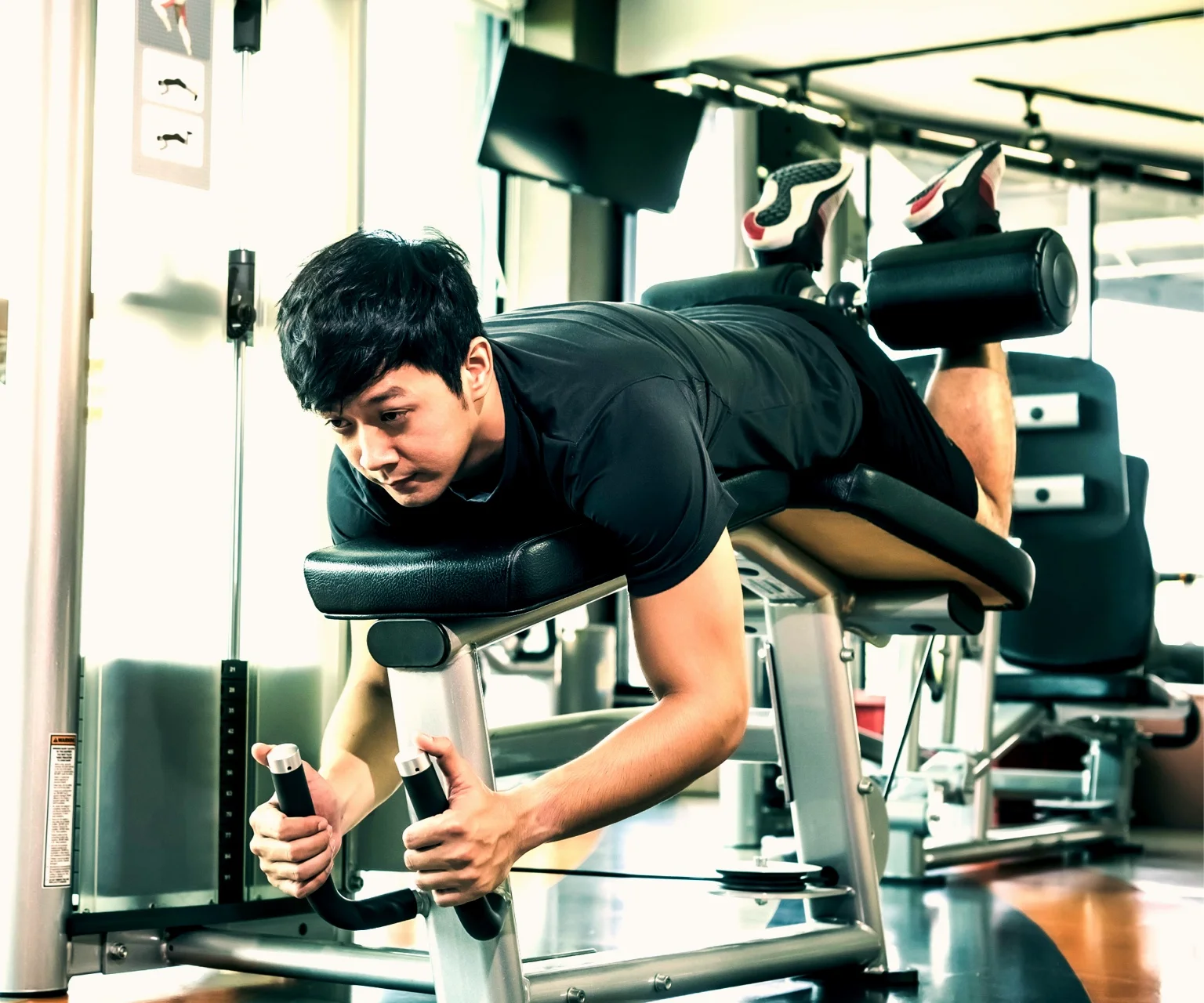
- Leg curls vs sumo squats - Like the deadlift, sumo squats are another compound exercise that work your hamstrings and glutes, at the same time working our your quads and hip flexors. The wide stance used in the sumo squat can be difficult for some people, particularly those with hip or knee issues. Leg curls, on the other hand, isolate your hams without putting pressure on your hips or knees.

- Leg curls vs hip thrusts - The hip thrust is an excellent exercise that targets your glutes and hamstrings, but it puts more of the focus on your glutes rather than your hamstrings. In contrast, leg curls specifically target your hamstring muscles. Combining both exercises together in a workout routine can ensure balanced development of your lower body.
Hamstrings muscle
Your hamstrings are made up of three muscles – the biceps femoris, the semitendinosus and the semimembranosus. Together, these muscles allow your leg to bend about the knee and assist in hip extension. Strong hamstrings are beneficial in everyday activities like walking, running and jumping.
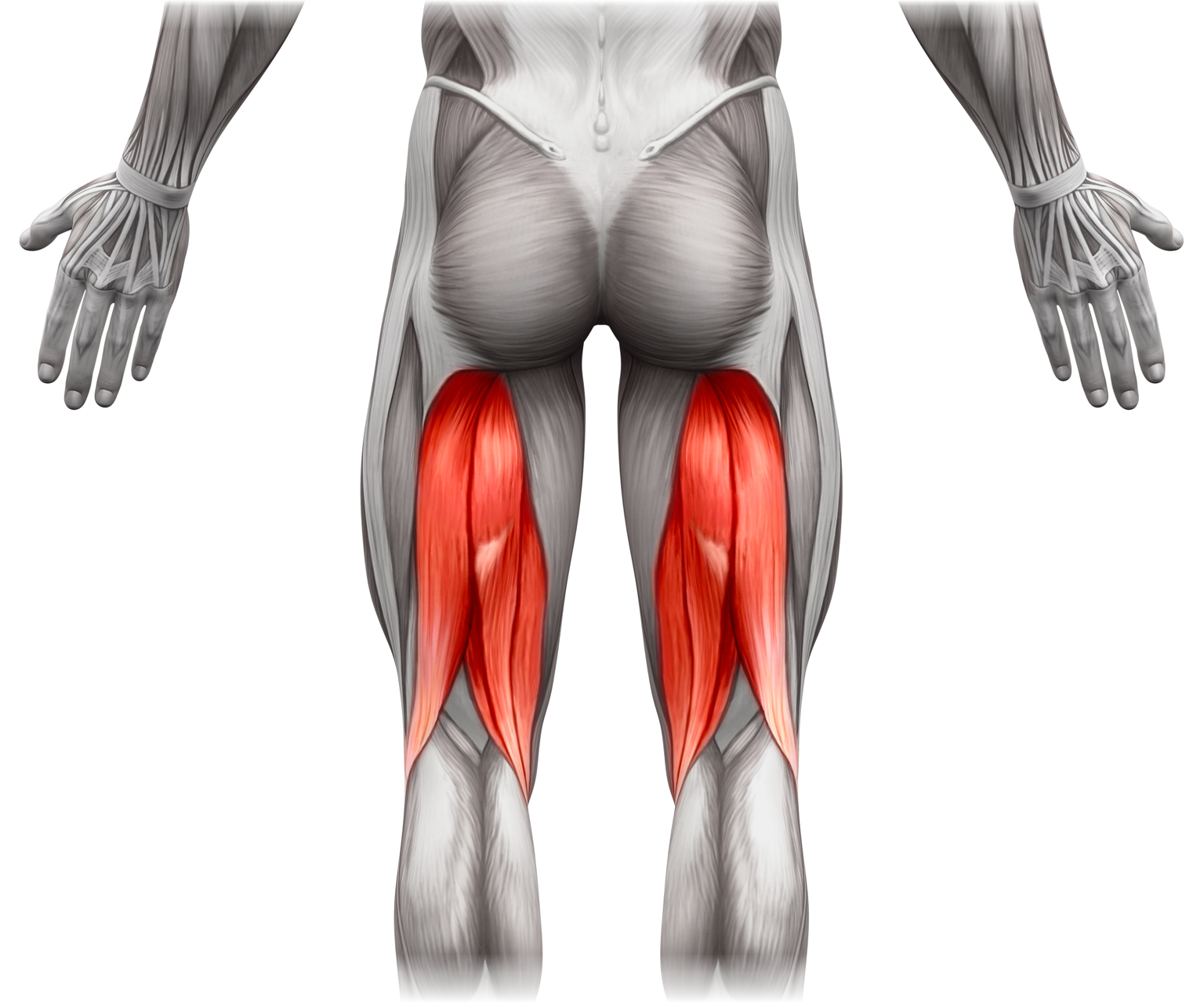
All variations of the leg curl primarily target your hamstrings. A 2021 study showed that the seated variations of leg curls result in greater hamstring growth compared to the prone variation.
The study concluded that "hamstring muscle hypertrophy was greater after seated than prone leg curl training" and further said "the seated rather than prone leg curl is recommended if training aims include increasing/maintaining muscle size of the hamstrings."
Hamstring curls
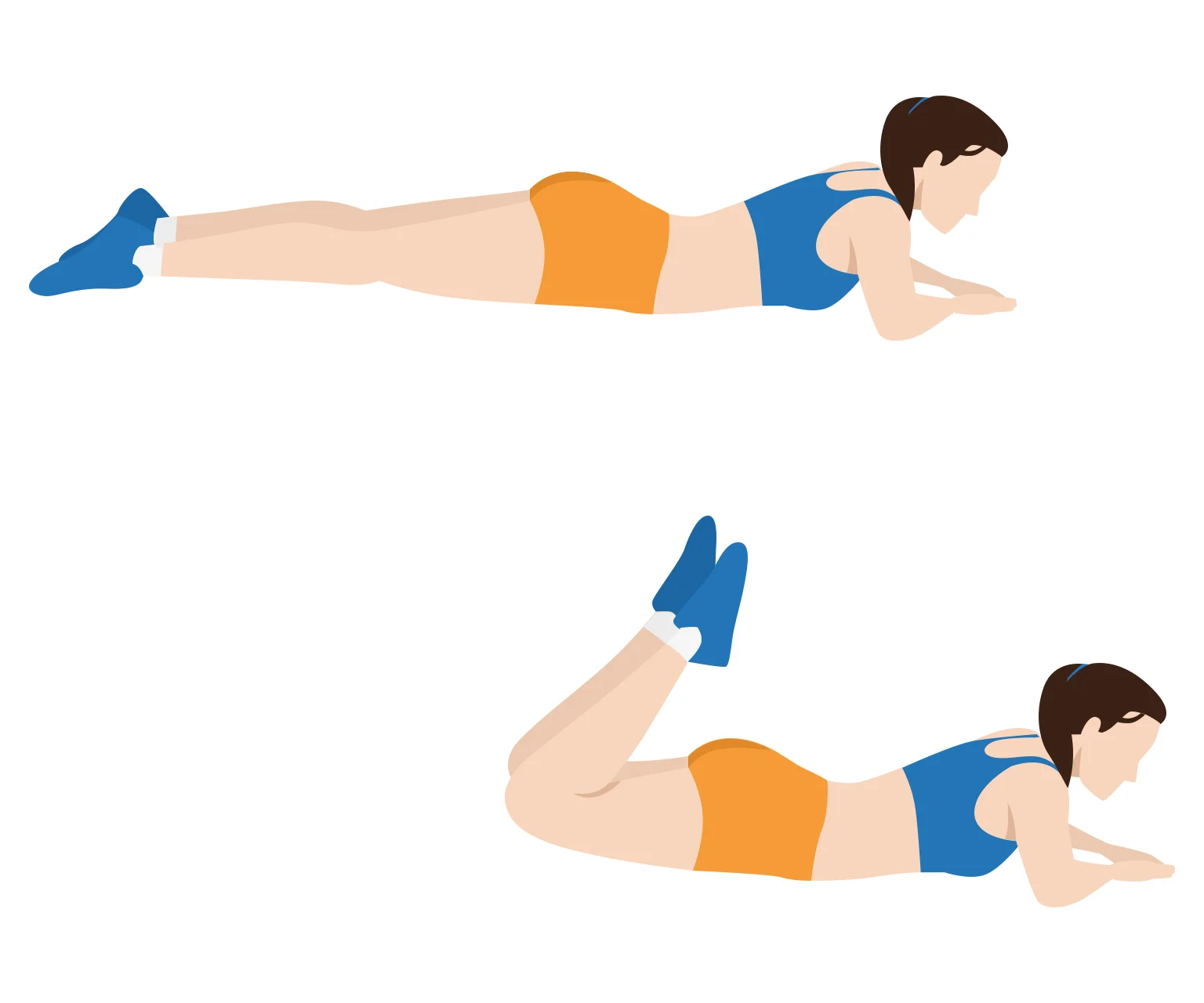
The primary benefit of the hamstring leg curl is that is isolates your hamstring muscles. Doing this exercise can help strengthen your hamstring muscles, as well as improve flexibility in your legs.
Leg curls can be added to any lower body workout routine, paired with quad focused exercises like lunges and squats. You can use it as a warm up exercise, with minimal resistance, to prepare your hamstrings for more intense exercises. In some routines, it is used as a finishing move to fully exhaust your muscles.
In this variation of the leg curl, there's no resistance aside from your own body weight. This makes it a good stretching exercise, providing a warm up for your legs workout. But it's unlikely to lead to any strength or size gains for your hamstrings until you start training with resistance.
How to do
- Lie flat on your stomach on an exercise mat.
- Extend you legs straight behind you with your toes pointed out.
- Bend your knees and curl your legs up towards your buttocks.
- Squeeze your hamstrings at the top of the movement.
- Finally, slower your legs back down to the starting position.
- Repeat for the desired number of reps.
Sets and reps
2-3 sets of 8-12 reps work well in many workout routines. This provides a good balance between muscle growth and developing strength. If you train with no resistance, you can up the reps to 10-15.
Lying leg curls

The lying leg curl is probably the most popular variation of the leg curl. To perform this exercise, you lie down (prone) on the leg curl machine, and curl the pad up with your legs. The primary muscle engaged in the movement is your hamstrings, located at the back of your thighs.
Because this is an isolation exercise that uses a simple movement on a machine, it's accessible to most people, whether you are a beginner for advanced trainee. The use of the machine makes it easy to adjust the resistance to match your current fitness level.
How to do
- Position yourself face down on the leg curl machine. Your legs should be extended with the padded lever resting above your ankles. Hold onto the handles for stability.
- Slowly curl your legs up towards your buttocks. Ensure you keep your torso flat on the bench through the entire movement.
- At the top of the movement, pause while your hams are fully contracted.
- Finally, slowly lower your legs back to the starting position.
- Repeat for the desired number of reps.
Seated leg curls
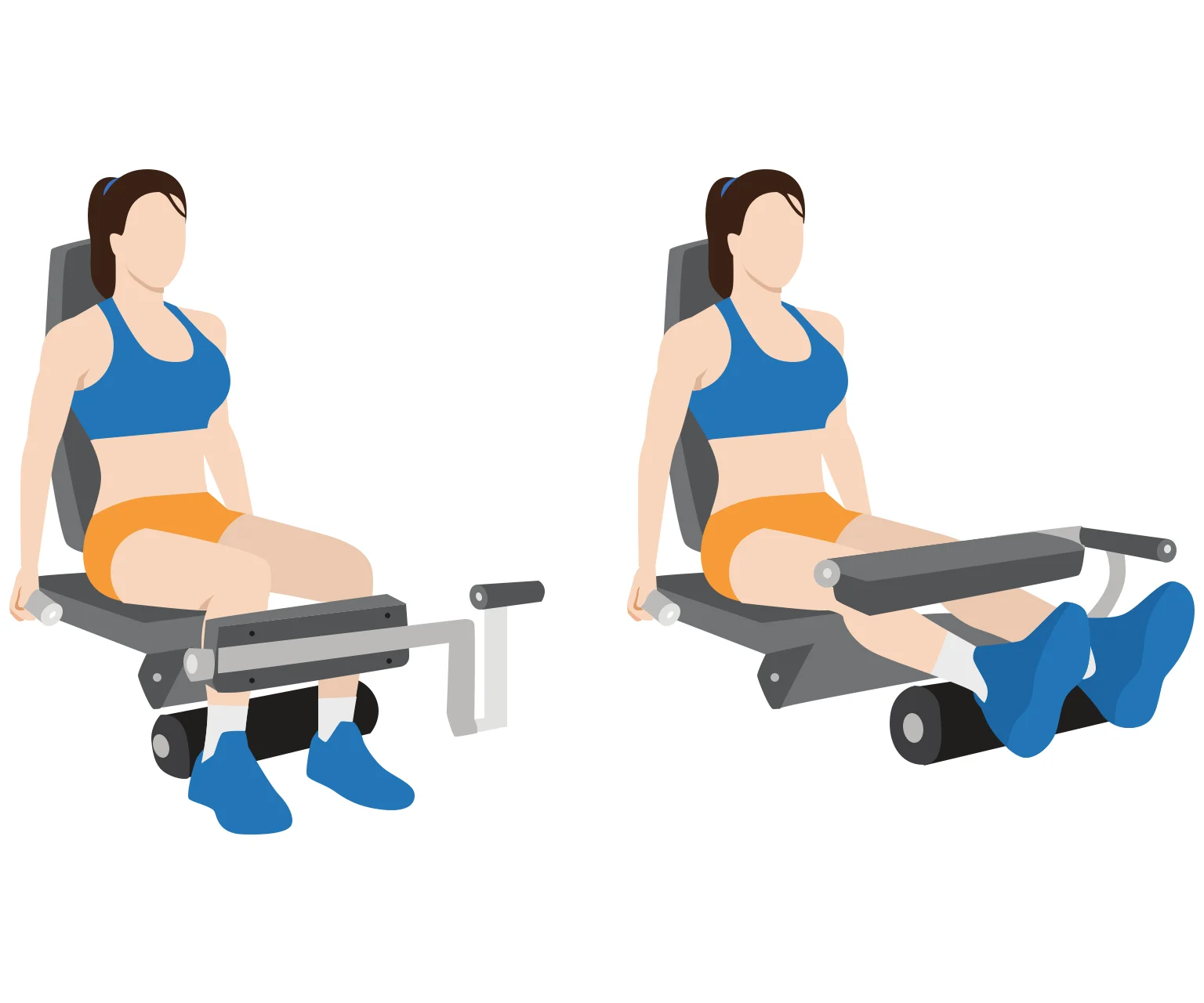
Both the seated and lying leg curl target your hamstrings, the seated leg curl places less strain on your lower back. This is because of the sitting position, which provides support to your back and torso through the movement.
The seated leg curl is actually more effective than the lying leg curl when it comes to training your hamstrings. A 2021 study showed that the seated variations of leg curls result in greater hamstring growth compared to the prone variation.
How to do
- Adjust the seat and lever to match your height and leg length.
- Sit on the machine with your back flat against the pad. Place your legs atop the padded lever. Hold onto the handles for support.
- Slowly curl your legs down as far as possible, ensuring you move only your lower legs and not your thighs.
- Pause, then slowly raise your legs back to the starting position.
- Repeat for the desired number of reps.
Standing leg curls
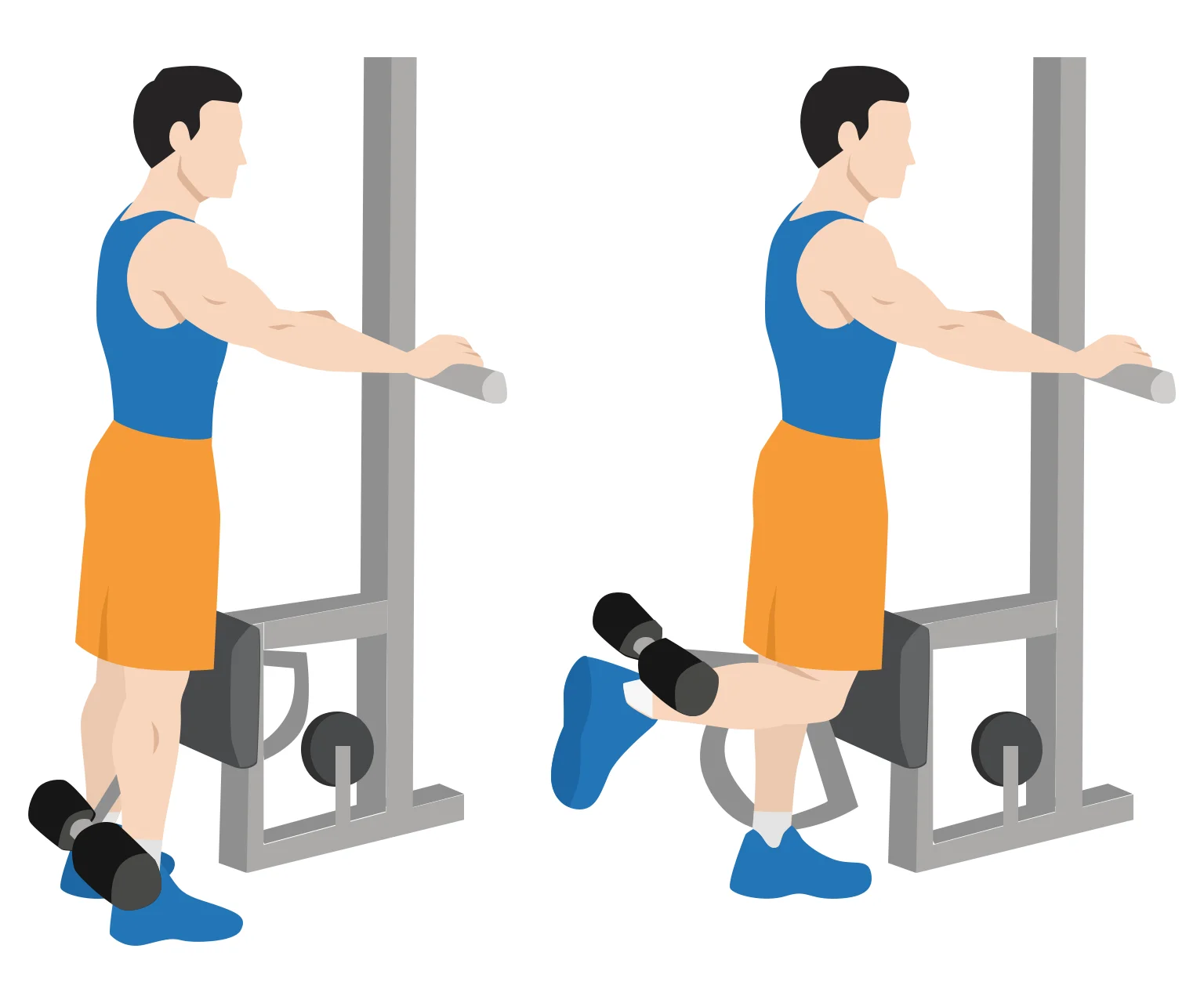
In the standing leg curl, you work one leg at a time. This makes it a useful exercise to ensure balanced development between your left and right legs. The standing position may also engage more of your stabilizing muscles to help you maintain balance throughout the exercise.
It's arguably easier and more comfortable to use the standing curl equipment compared with the seated or lying curl machines.
How to do
- Stand facing the machine and secure the level under one (or both) of your ankles. Hold onto the handles for support.
- Keep your thighs firmly pressed against the thigh support. Ensure they remain fixed in position through the entire movement.
- Slowly bend your knee, lifting your foot towards your buttocks.
- Squeeze at the top of the movement.
- Finally, slowly lower your foot back down.
- Repeat for the desired number of reps, then switch to your other leg.
Dumbbell leg curls

While it's common to use a leg curl machine to perform the lying leg curl, it's possible to do a similar workout by holding a dumbbell between your feet. You probably won't be able to lift as much weight compared with the machine, but it's otherwise equally effective at training your hamstrings.
How to do
- Choose an appropriate weight for your fitness level, and one you can comfortable support between your feet.
- Lie down on a flat bench, with your knees off the edge, lifting your feet up with the dumbbell into the air. Hold onto the bench for stability.
- Curl your legs up towards your buttocks, keeping your thighs and torso fixed on the bench.
- Squeeze your hamstrings at the top of the movement.
- Finally, slowly lower the dumbbell back to the starting position.
- Repeat for the desired number of reps.
TRX leg curls

TRX leg curls provide a lower-impact exercise that targets your hamstrings. This variation will target some of your core, too.
Unlike traditional leg curls, which involve using a machine, TRX leg curls use a suspension trainer. This exercise not only strengthens your legs and core, but it also improves your flexibility.
How to do
- Secure TRX straps at about knee height.
- Lie down on your back with your feet in the foot cradles. Your knees should be bent at about 90 degrees. Your arms should be by your sides.
- Straighten your knees and push your legs down towards the floor. Keep your hips on the floor throughout the movement.
- Finally, bend your knees and raise your legs back to the starting position.
- Repeat for the desired number of reps.
Cable lying leg curls

You can also perform leg curls by lying flat on the floor and pulling a cable with your legs. This variation demands more stability and control, potentially leading to better overall muscle engagement.
How to do
- Attach an ankle cuff to a low cable pulley system.
- Secure the attachment to your ankle and lie face down on a mat. Start with your legs fully extended.
- Using your hamstrings, curl one leg up towards your buttocks, keeping your torso and thighs firmly on the mat.
- Pause at the top of the movement, then slowly lower back to the starting position. Avoid letting the weight stack touch down between reps.
- Repeat for the desired number of reps, then switch to your other leg.
Resistance band standing leg curls
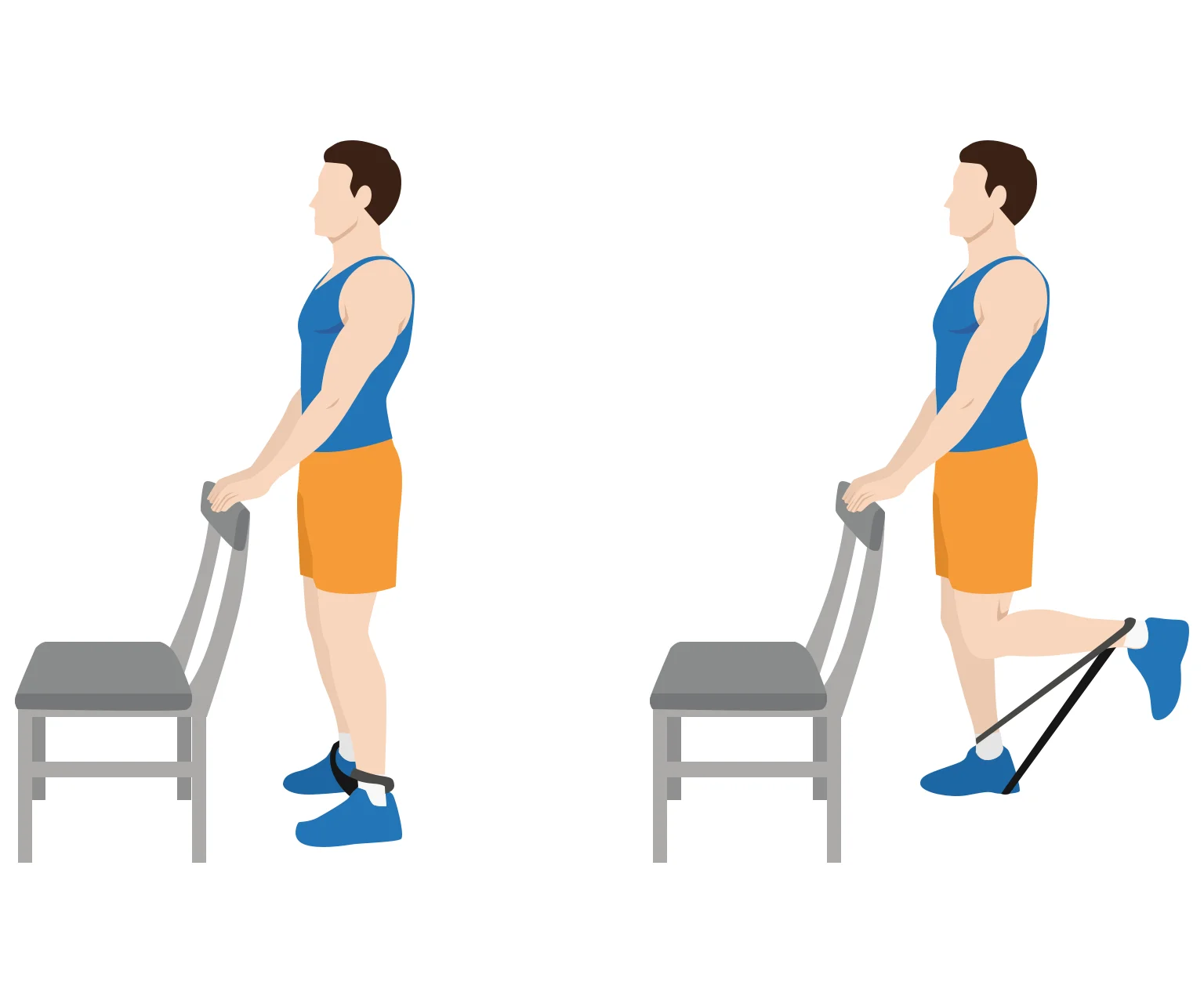
If you don't have access to a machine or cable stack system, you can also perform leg curls using a simple resistance band. In this variation, you wrap a band around your feet, then curl one foot back. You can hold onto a chair for support.
The resistance band adds a unique challenge to the leg curl, helping to improve your musclular endurance and flexibility.
How to do
- Secure one end of a resistance band around a post, and the other around your ankle. Alternatively, stand or wrap the band around one foot that be fixed on the floor.
- With your core engaged, slowly curl the leg towards your buttocks. Fully contract your hamstrings at the top of the movement.
- Pause for a moment, then slowly lower your foot back to the starting position.
- Repeat for the desired number of reps, then switch to your other leg.
Resistance band prone leg curls
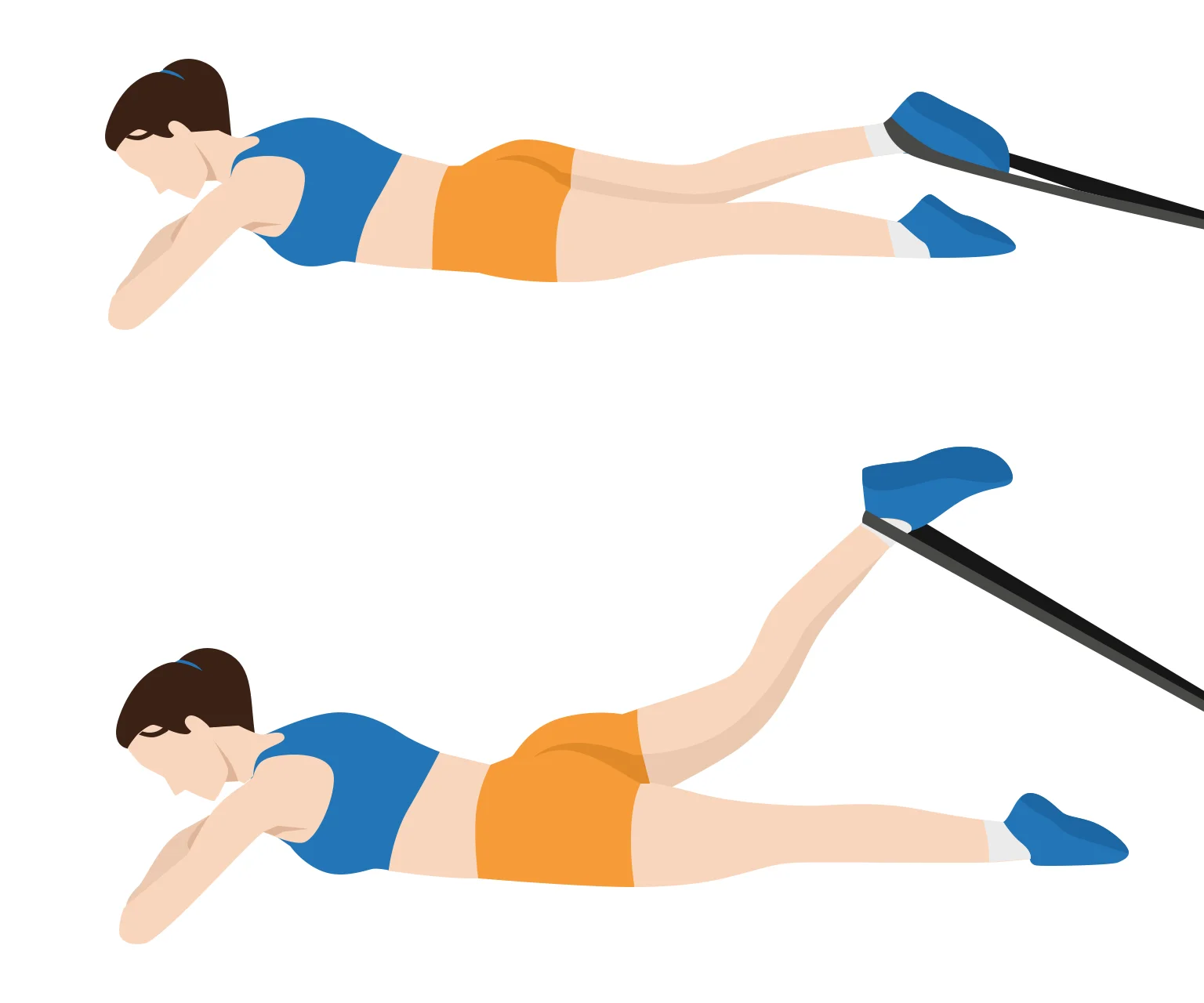
You can also use a resistance band in the lying prone position. This variation can be done anywhere since it doesn't need any special gym equipment.
How to do
- Secure a resistance band around a post or piece of furniture.
- Lie flat on your stomach on an exercise mat. Loop the band around your ankle, and start with your leg fully extended.
- Keeping your body firmly on the ground, then curl your foot up towards your buttocks by contracting your hamstrings.
- Squeeze at the end of the movement, then slowly lower back to the starting position.
- Repeat for the desired number of reps, then switch to your other leg.
Tips
Slow it down
When performing the leg curl, it's a good idea to perform slow, controlled movements. This will increase the time under tension for your hamstrings, which can lead to greater muscle growth.
Rushing the movement can also lead to improper form and increase the risk of injury. Slow, controlled movements will ensure it's your hamstrings, and not the momentum, doing the work.
Keep your hips on the bench
When performing the leg curl, make sure your hips remain in contact with the bench at all times. This helps ensure that your hamstrings are doing all the work, rather than your lower back.
If your hips lift off the bench, it could mean that your lower back is taking over, reducing the effectiveness of the exercise for your hamstrings. Engaging your lower back during the exercise could lead to back strain or injury.
References
Maeo, S., Huang, M., Wu, Y., Sakurai, H., Kusagawa, Y., Sugiyama, T., … & Isaka, T. (2021). Greater hamstrings muscle hypertrophy but similar damage protection after training at long versus short muscle lengths. Medicine and science in sports and exercise, 53(4), 825.
